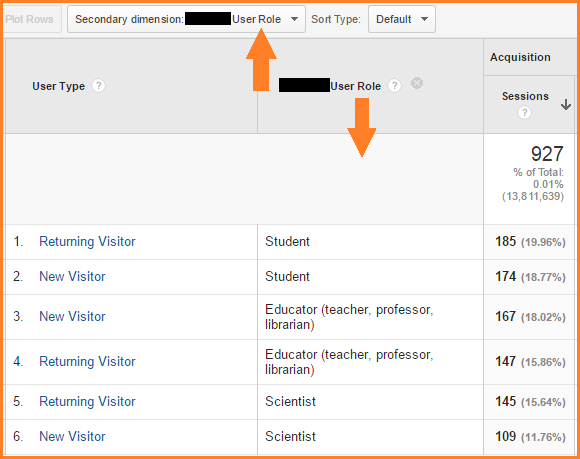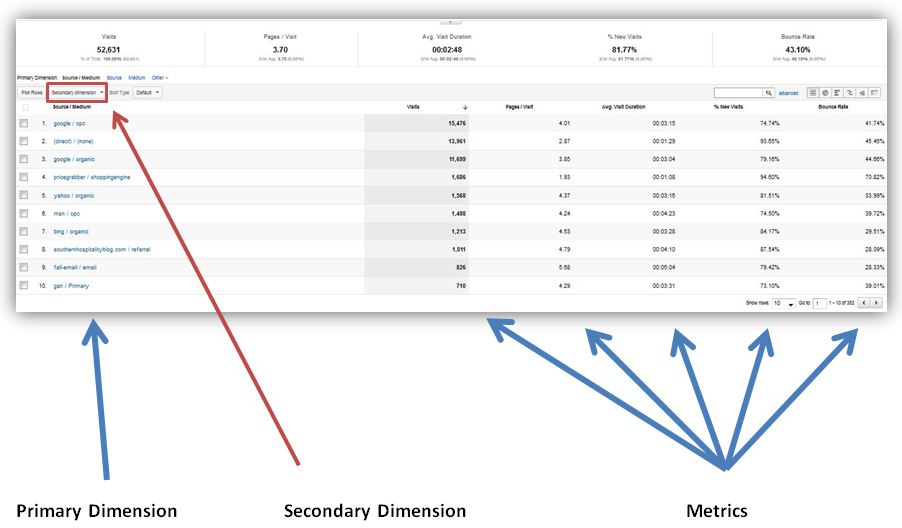Insights into the 'Secondary Dimension' in Google Analytics: A Thorough Description
Insights into the 'Secondary Dimension' in Google Analytics: A Thorough Description
Blog Article
Browsing the Midst of Secondary Dimension in Google Analytics: A Comprehensive Exploration on Its Functionality
In the realm of electronic analytics, the intricacies of information analysis usually hold the trick to unlocking useful insights. Within the expansive toolkit of Google Analytics lies a function that functions as a covert treasure for those that seek a deeper understanding of individual behavior and web site performance. Additional dimensions, though apparently uncomplicated at initial glimpse, nurture a wealth of untapped potential waiting to be harnessed. As we start this journey to explore the nuanced capability of second dimensions, we will certainly reveal just how this feature can brighten patterns, reveal connections, and inevitably lead the way for informed decision-making in the electronic landscape.
Understanding Additional Measurements in Google Analytics

Understanding just how second measurements work is vital for leveraging the complete power of Google Analytics. These measurements assist you respond to a lot more complicated concerns about individual behavior and the performance of your internet site content and advertising efforts. You can utilize secondary dimensions to assess which internet browsers or gadgets are most typically used by visitors who make a purchase, or to contrast the bounce rates of various web traffic sources. By incorporating key metrics with second dimensions, you can acquire important insights that drive notified decision-making and optimization methods - what is a “secondary dimension” in google analytics?.
Leveraging Secondary Measurements for Information Analysis
Structure upon the foundational understanding of how additional dimensions improve data evaluation in Google Analytics, the utilization of these added layers of details comes to be vital in removing important understandings for educated decision-making and optimization methods. By leveraging additional measurements, analysts can delve much deeper into the performance metrics by including even more context to the main dimensions, hence uncovering surprise patterns and connections that might not appear in the beginning glance. This much deeper level of analysis makes it possible for companies to better recognize individual actions, recognize trends, and determine areas for improvement.
Additionally, additional dimensions give an even more extensive sight of the data, permitting segmentation based on various parameters such as demographics, gadgets, website traffic sources, and a lot more. This segmentation facilitates an extra granular analysis, allowing organizations to tailor their approaches and campaigns to details audience sections for boosted targeting and customization. Basically, the critical use of secondary measurements empowers organizations to make data-driven choices that drive development and success in the digital landscape.
Advanced Techniques for Second Dimension Execution
Discovering complex methods to harness the complete potential of secondary measurements in Google Analytics raises the depth and refinement of data evaluation for strategic decision-making. One advanced strategy for implementing secondary measurements is the use of personalized measurements. By defining personalized measurements, customers can segment information better to obtain even more certain understandings into individual habits, such as tracking interactions with particular elements on a website or keeping an eye on the efficiency of a particular advertising project. One more innovative approach is the use of regex (routine expressions) within secondary measurements. Regex permits even more versatile and powerful pattern matching, allowing users to create intricate filters for data analysis. In addition, incorporating additional measurements with sophisticated sectors can give even a lot more granular understandings by using multiple layers of segmentation to the data. This method enables a much deeper understanding of individual behavior based upon various standards simultaneously. Carrying out these advanced methods for additional measurements in Google Analytics empowers users to carry out more innovative analysis and make data-driven choices with accuracy.
Interpreting Insights Via Secondary Dimensions

When analyzing understandings through second measurements, it is important to think about the context of the data and how different measurements communicate with each other. For example, understanding which details traffic resources result in higher conversion prices or identifying which gadgets customers favor for making purchases can supply actionable understandings for maximizing advertising projects and improving general internet site performance. By meticulously taking a look at the information with additional dimensions in mind, organizations can make educated choices that drive purposeful results and enhance their electronic visibility.
Maximizing Performance With Secondary Dimensions

One vital way to enhance efficiency with secondary dimensions is by segmenting information much more granularly. This permits you to isolate specific elements that might be influencing your metrics and get a better understanding of what drives success or failing in over at this website your digital initiatives. For example, by integrating additional measurements such as 'device classification' and 'landing page,' you can identify which tool types are most reliable for specific touchdown web pages, allowing you to tailor your methods accordingly.
Furthermore, using second dimensions can help you identify patterns, patterns, and relationships that might not be noticeable when examining data with main measurements alone. This much deeper degree of analysis can cause even more informed decision-making and ultimately enhance the total performance of your site or digital advertising campaigns.
Verdict
In conclusion, additional measurements in Google Analytics play an like it essential role in boosting data evaluation and supplying deeper insights right into web site performance. By using sophisticated methods and analyzing the data effectively, businesses can maximize their methods and improve general performance. Comprehending the performance of secondary dimensions is important for making educated choices and driving success in the digital landscape.
By leveraging secondary measurements, analysts can dive deeper right into the performance metrics by including even more context to the main measurements, hence uncovering surprise patterns and correlations that may not be apparent at first look. One advanced method for carrying out additional dimensions is the usage of customized dimensions.Having understood advanced strategies like personalized measurements and regex for second measurement execution in Google Analytics, the next vital action is interpreting the valuable insights derived through these innovative data division approaches. Translating insights through additional dimensions entails evaluating the connections in between the secondary and primary measurements chosen, revealing patterns, patterns, and correlations that may not be immediately evident when looking at the information in its totality.When interpreting understandings via additional dimensions, it is crucial to think about the context of the information and exactly how different dimensions connect with each other.
Report this page